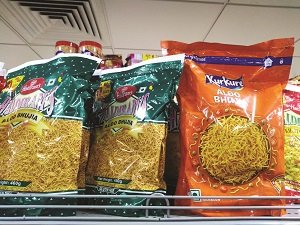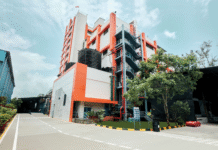The role of packaging has moved beyond storage and preservation of a product. Packaging interactions are often the deal sealer between brand owners and consumers. Apart from the design, aesthetics, information and compliances, the packaging is guided by functionalities such as sustainability, ease of handling and transportation, product protection, quality, and cost effectiveness. However, sustainability remains the most important aspect to drive packaging decisions. Growing environmental concerns and health awareness among consumers coupled with increased disposable income has allowed consumers to add sustainability in their purchasing decisions, thus influencing the Indian packaging industry.
Unlike rigid packaging, flexible packaging satisfies the mentioned conditions and stands up as the ideal packaging solution for consumer products for manufacturers and consumers alike; for this reason, flexible packaging is preferred above rigid packaging solutions and is expected to grow in India by a CAGR of more than 10% during the 2018-2020 period according to the latest market research report by Technavio.
The changing trends in flexible packaging can be observed easily in any average Indian store. On a shopping trip to a local store, the trends in flexible packaging were clearly visible in the form of majority of products lining the shelves in various forms of flexible packaging.
Reclosability
Reclosability in flexible packaging has widened its scope to the point that flexible packaging has moved past food and beverage, and can be found dominating pharmaceutical and cosmetic products as well. From adhesives to soap refills, spouts and fitments have become a popular choice for caps and closures in flexible packaging. Press to close and slider zippers can be found in food packaging from chocolates to ready-to-eat traditional Indian snacks. Reclosability in flexible packaging retains the freshness of the product and reduces spillage. For the many benefits of reclosable flexible packaging, consumers have started to expect it in all types of consumables.
Brand owners enjoy the low cost, manufacturing and storage; while consumers enjoy the ease of usage and extended shelf life of a product. Innovative solutions such as foil-lid spouts, push-pull caps, pull-up ring spouts, twist caps, twist and cork spouts, slider zipper, and reclosable seals are a few examples of the reclosable caps and closures in flexible packaging which is slowly replacing rigid packaging such as aseptic PET, glass and carton packaging.
Microwavable flexible packaging

Over the decades, Indian lifestyle and food habits have evolved. With time constraints and the growing demand for hygienic food, consumers are embracing ready-to-eat food with innovation in product service. Packaging, being a part of product experience, has undergone many changes to adapt the changing consumer demands. The increasing trend of on-the-go products has inspired manufacturers to come up with various innovations in flexible packaging.
One such ready-to-eat food provider, MTR, provides a wide range of North and South Indian dishes. An MTR product comes in retort flexible pouch that is presented in a mono-carton that can stand on the shelf. The ready-to-eat MTR product allows one to heat the product without opening the flexible packaging. The brand claims that, “each item on our Ready-To-Eat menu is natural, preservative-free and 100% vegetarian. Our technology also ensures that each item delivers that ‘just-cooked’ freshness straight on your plate.”
The retort pouches used in such ready-to-eat products retain taste, and are considered safe. They have high temperature resistance and barrier properties to maintain the atmosphere attained at the time of sterilization. The basic difference between other flexible packaging and retort packaging comes from the combination of thermal properties and barrier properties of retort pouches. A retort pouch has high barrier properties to maintain the atmosphere attained at the time of sterilization.
Unlike other flexible packaging where the packaged product is sterilized first and then packaged, the product in this type of packaging is first packaged and then sterilized, which helps impart longer shelf life. Pouches can be immersed in boiling water for the cooked food inside to be heated and made ready to eat.
They are also microwavable. Floeter India is one such player in the retort pouches for heat and eat segment. Many of its customers actually export ready-to-eat Indian food around the world.
Sustainability
The sustainability implications of flexible packaging are far more complex than any other packaging solution. Theoretically, flexible packaging offers sustainability benefits in its entire life cycle from manufacturing to transportation and recycling. It requires less energy and natural resources in production; given its light weight, the transportation and handling sources are reduced; and ends up with lesser material to landfills. The sustainability benefits of flexible packaging add value to the product; thus making it an upgrade to other existing packaging solutions. However, the catch in sustainability is that flexible packaging must be sorted at the consumer’s end right at the beginning of the waste collection process for it to then appropriately enter the recycling process.












Microwavable food pouches are revolutionary techynology in packaging market. There are also so many types of food pouches that are both usable onetime or use them as much as you want. To know more about products, visit our agency of food packaging in Australia.